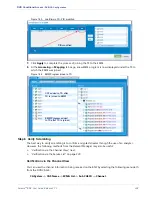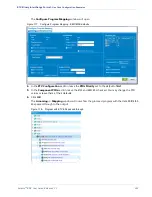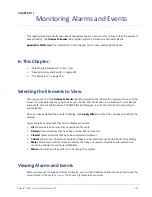
Selenio
TM
BNP User Guide, Release 3.7.1
238
- Use Case Configuration Examples
Note:
In all of the following Use Cases (except as specified as “Non-DPI”) it is assumed that the BNP is
configured for DPI. See
Chapter 8, “Digital Program Insertion (DPI)”
for details on configuring
DPI.
Pre-Bound Ad Splice
In pre-bound ad splicing, the input network (or program) stream does not contain ETV data; rather, an
ad containing ETV data ESs is spliced in later. In this case, the BNP would be configured to play the ad’s
ETV streams on the output during the ad splice.
shows an example of pre-bound ad splice.
Figure 170. Pre-bound Ad Splice flow
Output MUX
Advertisement
Spliced Program
Broadcast Program
Sat. Receiver
Sat. Receiver
BNP
BNP
DPI Pump
DPI Pump
STB
STB
Local EBIF
Streamer
Local EBIF
Streamer
Broadcast
Pid Type
Video
Audio
Pid Type
Video
Audio
EBIF EISS
EBIF Data
Pid Type
Video
Audio
EBIF EISS
EBIF Data
Pid Type
Video
Audio
EBIF EISS
EBIF Data
Configuration Steps:
To configure pre-bound ad splice:
1.
From the BNP
Element Manager
, click on the
Grooming -> Mapping
tab.
2.
Create an output transport stream, if necessary. (See the section that begins with, “Managing
Output Transport Streams” on page 113 for additional information.)
3.
Use the
feature to groom a desired input program to the desired output
transport stream (oTS), as seen in
, for example.
Note:
In this use case, the input program does not contain any ETV elementary streams.






























